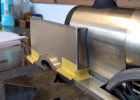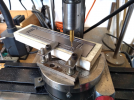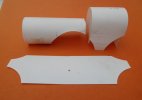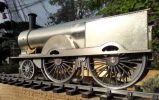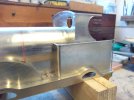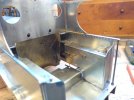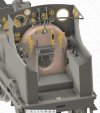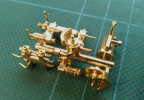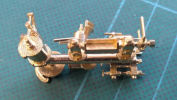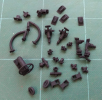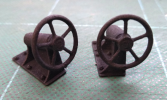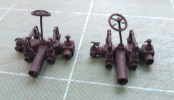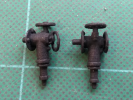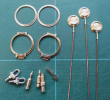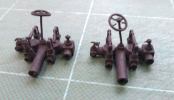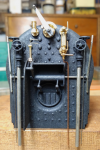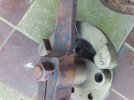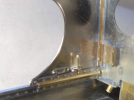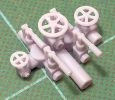NickB
Western Thunderer
The firebox is the usual wrapper around a skeleton, and the boiler is simply a rolled cylinder.
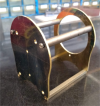
Then I did a trial assembly to make sure everything fits. The dome, safety valves and backhead are 3D prints.
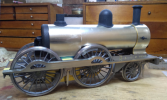
Here's the backhead in detail. It took quite a long time to draw because of the complexity, but it was worth the effort. I'm sure I saved myself a lot of time. Actually I had to carve bits off the bottom to get it to fit. It was just a bit too tight due to the stackup of tolerances (a posh way of saying that I got the boiler just slightly too long). In future I will try to allow for things like that when drawing them. Incidentally, there is some wierd camera lens distortion in that photo - the boiler fittings are actually in a line.
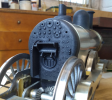
Another interference point is that the boiler makes contact with the leading drivers because the G3 back to back dimension is smaller than scale. I'll have to cut out a clearance for that, which won't be visible behind the splashers.
Nick

Then I did a trial assembly to make sure everything fits. The dome, safety valves and backhead are 3D prints.

Here's the backhead in detail. It took quite a long time to draw because of the complexity, but it was worth the effort. I'm sure I saved myself a lot of time. Actually I had to carve bits off the bottom to get it to fit. It was just a bit too tight due to the stackup of tolerances (a posh way of saying that I got the boiler just slightly too long). In future I will try to allow for things like that when drawing them. Incidentally, there is some wierd camera lens distortion in that photo - the boiler fittings are actually in a line.

Another interference point is that the boiler makes contact with the leading drivers because the G3 back to back dimension is smaller than scale. I'll have to cut out a clearance for that, which won't be visible behind the splashers.
Nick

